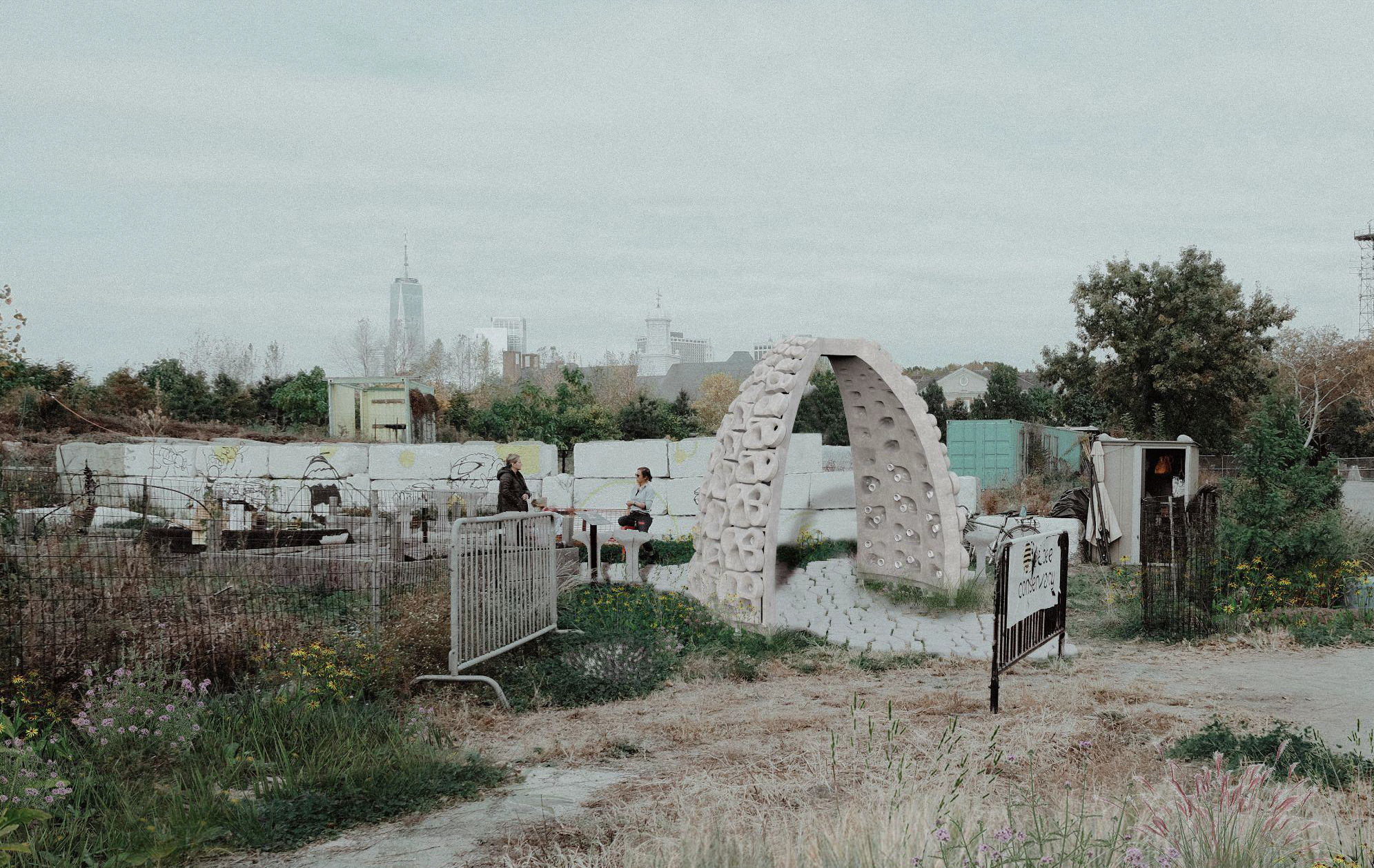Feral Surfaces: designing the multi-species city

Ariane Lourie Harrison, aharriso@pratt.edu
Urban Design
New York City buildings comprise approximately 3,000 square miles of building facades. These surfaces are underused as enclosures that simply protect humans from the exterior while signaling symbolic capital. These surfaces can become vital preserves of new habitat for Northeastern avian and insect species facing dramatic decline.
Harrison Atelier’s Feral Surfaces prototypes new formats of building cladding as smart habitat for native pollinators. Developing our multi-species design for pollinators (ROH awards 2020 and 2019), we have prototyped analogous habitats from mycelium-infused hempcrete, an ethically sourced and sustainable material that can be cast to accommodate habitats for cavity and ground-nesting insects. Each of these analogous habitats contains cameras and microprocessors to monitor, record, and feed a database for automated insect identification with Microsoft’s AI for Earth program. While the construction of analogous habitat is essential for species survival, we argue that design can do more for climate resilience by addressing gaps in scientific research on insects. IUCN data from 2021 show that the conservation status of only about one percent of the vast insect class has been assessed. The monitoring system, on the one hand, allows for the recording and image database for automating insect identification. On the other hand, it offers a real-time portal for experiencing the city at a non-human scale.
In April 2023, Feral Surfaces will be constructed in two urban sites—in Barcelona (awarded a place in the 2023 Festival d’Arquitectures de Barcelona) and at Governors Island’s The Bee Conservancy. Feral Surfaces seeks to transform building surfaces into intelligent novel habitats, making cultivation and maintenance of building surfaces synonymous with planetary care.